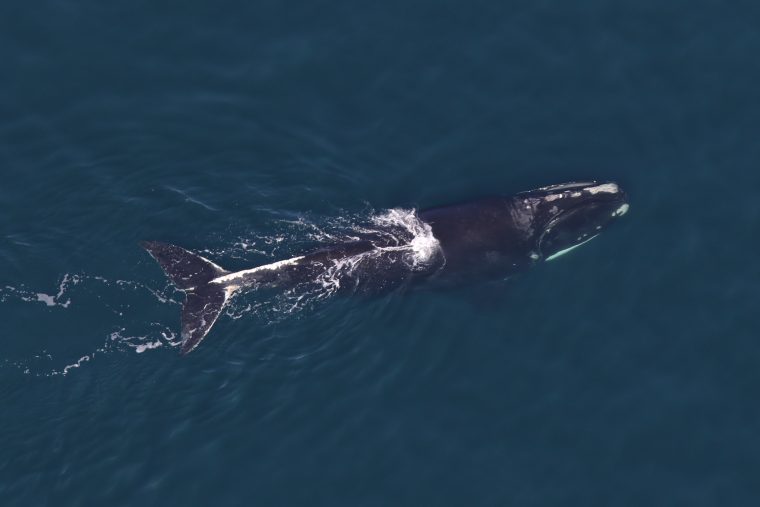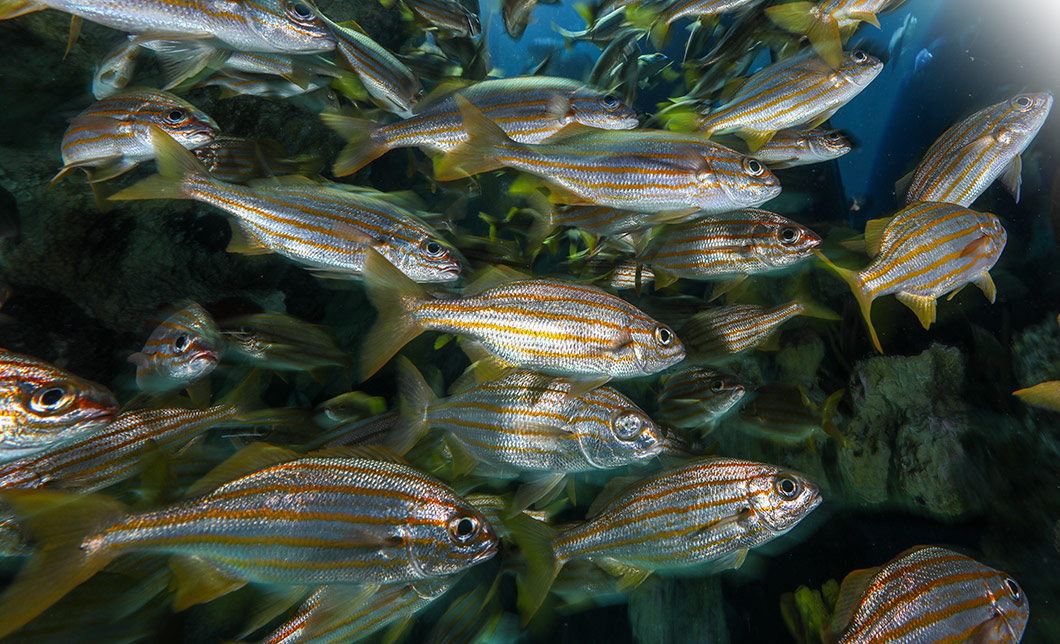We will be closed on Tuesday, April 30, for a day of strategy work and team building.
The New Balance Foundation Marine Mammal Center will be closed for exhibit maintenance on Monday, April 29 and Wednesday, May 1.

BOSTON, MASS. (December 17, 2020) – The sighting of a 14-foot North Atlantic right whale calf swimming beside its massive 50-foot, 100,000-pound mother off Hilton Head, SC last weekend is cause for optimism as researchers work hard to save the critically endangered species. This is the third live right whale calf sighting this month.
The whale is the first calf for its 12-year-old mother known as #3942, who also has a famous mother, Kleenex (#1142). Kleenex has had eight calves but none since she was entangled in 2014, carrying rope through her mouth to this day. Whale #3942’s calf sighting is the third off the Southeast coast this month. On Dec. 4, a calf born to Chiminea, another first-time mom at 13 years old, was spotted off the coast of Cumberland Island, Ga. A second calf, who was born to 16-year-old Millipede, was seen on Dec. 7 off Vilano Beach, Fla.
“We have had relatively few first-time moms calving in recent years so two new mothers is very positive news,” said Philip Hamilton, research scientist at the New England Aquarium who manages the North Atlantic Right Whale Catalog—a photo identification database developed by the Aquarium for the North Atlantic Right Whale Consortium that details the whales’ histories with the four-number codes. “Every new birth is welcome and celebrated as these magnificent animals still face significant life-threatening dangers with fishing gear entanglements and ship strikes.”
Chiminea (#4040) has an interesting story that the Aquarium’s Right Whale Research Program and St. Mary’s University in Halifax recently tracked through genetic testing and photographic identification. When she was a newborn calf, she and her mother (#1308) were seen together twice in January 2008 but never again that year. It was unknown if the calf survived because the calf had been too young to identify through photos. The next year, a young whale was seen. That whale, Chiminea, was difficult to approach to get a skin sample from until last year when the Aquarium team was successful in the Gulf of St. Lawrence where she is now regularly seen. That skin sample helped confirm that she was, in fact, #1308’s calf. Chiminea’s survival is particularly poignant as her mother was killed by a vessel strike in 2011 while still with her young calf that year.
This is Millipede’s (#3520) second calf. She was seen with her first calf in Dec. 2012 when she was 8 years old but never again that year or in 2013. She, like the other two mothers so far this season, is regularly seen in the Gulf of St. Lawrence.
Meanwhile, right whales continue to be seen during the Aquarium’s aerial surveys of southern New England waters. On Monday, researchers spotted five right whales, including three right whales socializing and engaging in possible mating behavior. This sighting caused the National Oceanic and Atmospheric Administration (NOAA) to advise ships in the area to reduce speeds and look out for whales. This is the fourth time since September that the Aquarium’s aerial surveys initiated this response, and it could be especially important now as whales continue to feed and engage in social and courtship behaviors.
For 40 years, the Aquarium’s Right Whale Research Program has extensively studied this critically endangered species. Discovering the threats these whales face inspires the team to collaborate with fishermen on new techniques to reduce deadly entanglements in fishing gear, facilitate communication across the shipping industry to reduce vessel strikes, and work with lawmakers locally, nationally, and internationally to lobby for protections for the whales. The estimated population number for this species stands at just over 350 whales.
MEDIA CONTACT:
Pam Bechtold Snyder – psnyder@neaq.org, 617-686-5068

